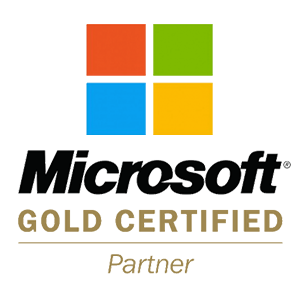 A CFO’s impact on the organization is governed by how efficiently they can accomplish key tasks and having the right tools to do so. One impediment to a CFO’s productivity is when the CEO asks for reporting that takes time to gather.
A CFO’s impact on the organization is governed by how efficiently they can accomplish key tasks and having the right tools to do so. One impediment to a CFO’s productivity is when the CEO asks for reporting that takes time to gather.
Gathering the report could be time consuming because it’s data someone else on the team has, the data’s coming from three different software systems, or the data is sitting in a spreadsheet. Either way, compiling the data and creating the report can be time consuming and is often prone to errors. There is an easier way.
Here are a number of functional processes and reporting elements that modern software technology can help you gather in a matter of minutes – not hours or days.
1) Reconciling Your Bank Account in Realtime
Understanding what your cash position is crucial in any business. Your bank account tells only one part of the story. Uncashed checks, pending transactions, fees, ACHs, chargebacks – this is the full story. Automatically reconciling your bank account using a prior day bank file will enable you to stay on top of problem transactions, accurately know your outstanding checks, manage outstanding deposits, and ultimately better understand where you really stand.
2) Head Count
Business doesn’t get done without people. Headcount can be used as a component to critical KPIs. Are you staffed properly relative to revenue? What is your overhead growth relative to headcount? How is the company performing relative to head count? Are your field services costs in line with revenue? There is tremendous power when information in HR can be in your and the CEOs hands in a matter of minutes, and be used as part of critical KPI calculations.
3) Budget Reporting
At the end of the day, CFOs, Finance Directors and Controllers are looking for a golden unicorn. What many call, “One Version of the Truth.”
Consolidating data in a single location within your organization allows you to pull data out faster and more accurately, empowering you and senior leadership to make more informed decisions.
How the budget compares to actual, margin by product line. When this is done by spreadsheet you can’t simply pull that data out. The big players in the Telecom market aren’t doing things this way, why should you?
4) Top Vendors & Customers
Imagine if you could have a live snapshot of your vendor and customer relationships. What you owe. Who owes you. Who are we buying from the most? What are you selling the most? How would that change the decisions you make tomorrow?
5) Inventory Turnover
Making the most of your inventory and finding the balance. When you don’t have enough of it, customers get frustrated, and having too much is not an effective use of cash. Wouldn’t it be nice to track what inventory is currently available and what your turnover is? How long inventory has been in stock. Not a problem.
6) Regulatory Reporting
GAAP says one way, government says another. Technology can help make it easier. You can have accounting layers so whenever you post an entry you can determine which layer to perform the entry. This helps you to report from a single source, killing the Excel wizardry. Two separate layers. One set of books.
7) Fixed Assets
Telco and Broadband providers have a significant amount of fixed assets. It’s essential to keep tabs on these assets to ensure they are properly maintained, accounted for, and properly recorded for GAAP and tax compliance. By being able to effectively manage your fixed assets within a single software platform as your accounting system, you can make sure the infrastructure to operate your business runs properly, because without them, you don’t have a business.
The Difference Between Data and Knowledge
Every organization compiles data. But data is just potential knowledge. Organizations that are competitive in the marketplace are able to use that data to make better business decisions. Enterprise Software technology allows CFOs to bridge the gap between data that sits hidden in corners of the organization to actionable information that can inform decisions.
Imagine looking forward to meeting the CEOs Reporting Requests
There are two primary stages for most CFOs. The first stage is focused on keeping the books in order, basic reporting and dealing with industry regulatory and compliance issues. Then there’s the second stage, which is becoming an advisor to the CEO and Board. Being able to gather reports in real time will help you become more efficient if you’re in the first stage and help you provide valuable insights if you’re in the second stage.
FREE WEBINAR:
“Digital Transformation for Rural Telecom CFOs”
Join us for a 30-minute webinar, Thursday July 19 at 1 PM CST by Susan Alvarez, former CFO. Click HERE to register.
About the Author:
Tyler Barron is a Senior Consultant with ITK Solutions Group. He has a retail and finance background which he has put to use helping clients put Microsoft D365 and Dynamics AX to use to solve their business problems. Tyler has worked on projects ranging from a local supermarket chain to a 600+ company shared services conglomerate.




